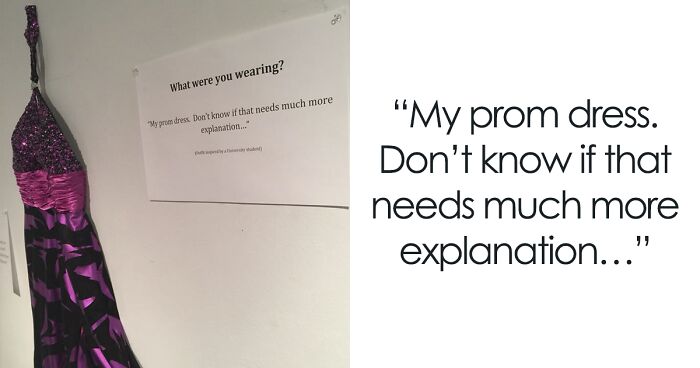
Victims Who Were Told That Their Clothing Got Them Sexually Assaulted Display What They Were Wearing
Each time the victim of sexual violence gets asked what they were wearing, it heartlessly implies that he or she was responsible for the assault and could have prevented it. Rape victim blaming drives responsibility away from a perpetrator and puts it on the victim’s shoulders. To fight against the myth that sexual assault could be prevented by the victim alone, an art exhibition displaying what victims wore during the assault was created.
More info: sapec.ku.edu | twitter.com
The idea to create such exhibition was born after Dr. Wyandt-Hiebert and Ms. Brockman, sexual violence and domestic violence survivor advocates, attended a conference and read a poem “What I Was Wearing” by Dr. Mary Simmerling’s, for the first time. They were touched by it and decided to create the poem’s visual representation. The advocates came up with survivors art installation called “What Were You Wearing?”. The first installation was held at the University of Arkansas in 2014. Students of the university participated by sharing brief descriptions of what they were wearing when they were sexually assaulted. The intent of the installation was to show people that changing one’s clothes will not stop sexual abuse.
The idea of this installation caught on. Since it was first displayed 5 years ago, “What were you wearing” traveled from one university campus to another. It has also inspired other similar installations and prompted a conversation about the problem of victim-blaming. Scroll below to see some of the exhibits from this stark social issue installation.
“What Were You Wearing? is an installation created to educate people that clothing doesn’t cause sexual assault
“A sundress. Months later, my mother would stand in front of my closet and complain about how I never wore any of my dresses anymore. I was six years old.”
“Army ACU’s and I was carrying a gun. So much for that preventing anything”
“Khakis and a dress shirt. I had to give a presentation that day in my communications class. They took my clothes at the hospital during my rape exam. I’m not sure what happened to them.”
“A swimsuit. We had been canoeing at the river all day. It had been a really fun time. Then they came into my tent when I was trying to change clothes.”
“My favorite yellow shirt, but I don’t remember what pants I was wearing. I remember being so confused and just wanting to leave my brother’s room and go back to watching my cartoons.”
“T-shirt and jeans. It happened three times, by three different people in my life. Each time I was wearing a t-shirt and jeans.”
“I missed a couple of days of work after it happened. When I told my boss, she asked me this question. I said, ‘A t-shirt and jeans, what do you wear to a basketball game?’ I walked out and never came back.”
“(1) Jeans and a t-shirt at 18-years old. (2) Children’s dress by my cousin’s father at 5 years old. (3) Dress – I thought I was safe with a woman but woke up to her raping me, too.”
“A university t-shirt and cargos. It’s funny; no one has ever asked me that before. They ask if me being raped means I’m gay or if I fought back or how I could ‘let this happen to me,’ but never about my clothes.”
“I was wearing khaki shorts and a cotton tank top. He convinced me to come back to his house with him after a lame date. I was told by a friend to keep the clothes. I was wearing in case I decided to report it. They are still in a bag hidden in my closet.”
“The first time I was wearing jeans and a blue t-shirt. The next time, years later, I was wearing jeans and a blue t-shirt. I wear blue sometimes when I kickbox or when I need to be assertive. Even today I am wearing blue because they don’t get to take my voice, my favorite color, or my ability to say no and mean it. These are mine.”
“I was wearing jean shorts and a tank top. He wouldn’t let me out of his car until he finished. As soon as I got home, I threw that shirt in the trash.”
“My prom dress. Don’t know if that needs much more explanation…”
“White t-shirt and black basketball shorts. It was always the same outfit. It was always after rec center league. I trusted him. My mom trusted him.”
“Jean shirt, jeans, and Toms. Everyone seems so confused when I tell them this. Like they can’t understand what I am saying. They can’t understand what I was wearing. It’s almost funny. Almost.”
“I was wearing a sari. The same thing I wear most days. It was what I was comfortable in. It reminded me of home, of my family, of my identity. Now it reminds me of him.”
317Kviews
Share on FacebookYeah, I know what you mean :( And the five year old as well.
Load More Replies...This is really deep and heartbreaking. What an asinine question to ask someone after going through a nightmare.
Clarification - I didn't mean the exhibit! I mean real people who ask the victims this question.
Load More Replies...You should never, ever ask a sexual abuse victim what they were wearing. It is extremely hurtful and it's not relevant: even if someone was wearing a supersexy dress or bikini or whatever, she still has the right to choose whether she does or doesn't want to have sex.
That is the whole point of the exibition. To show that which clothes you wore have nothing to do with the experience.To shift blame from victims to rapists
Load More Replies...Notice the university T-shirt and cargoes one? I think that's a man, and his point is that men don't get asked this particular question, and that fact lays bare how illogical and stupid the question is. His words are important and wise, I think. Of course, the other things he DID get asked are equally problematic.
This is true. It seems people will find all kinds of ways to blame the victim rather than the rapist. I think they do this as a way of telling themselves it could never happen to them, because they would have been dressed correctly, but of course, that’s an equally ridiculous idea, too. There’s no dress code for rape.
Load More Replies...I was wearing a hoodie and leggings. My mother was wearing a T-shirt and jeans. My best friends was wearing a Halloween costume that covered her almost from neck to toe. It's not about the clothes. Let's just pretend that all the victims were actually wearing revealing clothes. Even then it wouldn't make it acceptable.
I'm so sorry alia. That's making me feel sad, that there is somewhere, where this can happen, so often... To too many women...
Load More Replies...Thanks for including boys and men. This is not just a girl/woman problem. This is a problem that knows no age, race, or gender.
So so true Bob. I know several men who have gone through this also. One man I know went through this by two different people. One was from his female babysitter when he was a little boy and the other was once from a gay man when he was an adult. So, I agree with you.
Load More Replies...Keep your filthy, selfish hands to your damn self. Plain and simple. To blame clothes is to avoid responsibly. We wonder why we live in a massive rape culture...
It's the whole culture of victim blaming, especially when the victim is a woman and the attacker is a man, although there are plenty of female attackers and male victims out there too. There was a post which came out some time back which got to me " 'Was it my fault?' asked the mini skirt. 'No' said the burka, 'it happened to me too.' The diaper in the corner couldn't even speak."
" 'Was it my fault?' asked the mini skirt. 'No' said the burka, 'it happened to me too.' The diaper in the corner couldn't even speak."
Load More Replies...the five year old and the six year old......... don't understand how people could be so cold-hearted and selfish
Clothing didn't get these people sexually assaulted. Sexual assaulters got these people sexually assaulted.
I was wearing jeans and a tank top. I don't know whatever happened to them. I was told I had it coming and I wasn't a good Christian. I no longer believe
You did nothing wrong. The people who said that are sick and ignorant. I'm so sorry. None of those things should have happened to you.
Load More Replies...I was attacked. By a friends roommate, I fought, Hard & got away. Called my dad to pick me up bc I was 18 with no car. I'll never forget my father, my hero, looking at me & saying "Well, look at what you're wearing." It was summer, my friend & I were going to the beach. It was a swimsuit & shorts.
First of all I’m glad you were able to get away. Second of all, do you feel like your fathers response was worse than the attack? It seems so hurtful and scary that the man who is supposed to protect you and teach you would blame you. It makes me so sad. How are things between you and him now?
Load More Replies...I don't understand why not more men rage against this 'What was she wearing'. because what this essentially claims is, that all men are rapists, have as little control as an animal and they can only excert control over their sexual instinct if the woman is properly covered.
As recently as November 2018 a FEMALE defense attorney defended a 23 years old rapist: Defense attorney Elizabeth O’Connell highlighted the fact that the 17-year-old victim was wearing thong underwear the night she alleged she was assaulted. "Does the evidence out-rule the possibility that she was attracted to the defendant and was open to meeting someone and being with someone? You have to look at the way she was dressed,” O’Connell said. “She was wearing a thong with a lace front.” As long as these arguments are honoured in a court of law, there's a very long way to go to achieve a civilisation where there's no excuse for rape.
Why does it f*****g matter what she wears? Even if she’s walking around butt naked it’s not an invitation to rape her. Even if she is clearly flirty and maybe even looking for a casual fling, it doesn’t mean rape her. Stop shaming women and teach men self control.
As someone who was raped as a child and is now a senior citizen, I can tell you they’re marginally better than those who ended up killing themselves, but they’re not okay. You learn to live with it, but the guilt and shame don’t wash off.
Load More Replies...I really think if people belive the victim is responsible then you must be rape sympathisers. You can't blame clothing on a crime.
I am really upset now, I feel for these HUMAN BEINGS. There are some sick people out there. I just hope that I'm a good enough human for someone to tell me if that happens to them because I will do everything and anything to get justice.
what a powerful exhibit. I have chills up and down me and shocked to see more than one outfit sometimes per person.
I was wearing my work clothes, I worked in a take away cafe, a loose uniform shift dress, a filthy apron covered in grease & flour, sneakers & socks, a hairnet with a white paper cap. I stank of fried food, cooking oil, meat, I was 15 when I was raped. I was wearing a long red skirt & a white jumper when I was assaulted but not raped by a neighbour at a neighbourhood Christmas party, I was 12. I was sexually assaulted by my boyfriends brother at a family celebration. I was wearing a simple modest black cocktail dress. He burst through the locked bathroom door while I was on the toilet, he started tearing my clothes, dragging me onto the floor, he was very big he tried to gag me I bit him I screamed & kicked, all I could think was, oh god I'm going to be raped in a puddle of my own urine, Someone had heard my screams over the music . What were you wearing dates from an awful time when it was assumed the Victim "asked for it" because they were dressed provocatively.
And yet in Ireland a victim can be blamed for her rape because of what she wore and the accused gets found innocent. Her underwear was used as an example to shame her and put the blame on her. When is the way you choose to dress going to become irrelevant? It’s your body, use it, have fun with it, change it, tattoo it, pierce it, every now and again be kind to it but always remember it’s yours alone to do with it as you will, no one has any right to it no matter what you wear, no matter where you are. Irish outcry over teenager's underwear used in rape trial http://www.bbc.co.uk/news/world-europe-46207304
This is such a grotesque yet illuminating presentation. It is disgusting that a western society still has the audacity to associate and judge any rape with what the victim was wearing. As if it ever excuses such a vile act. The little children ones made me sick.
I was wearing my waitress uniform of black pants and a green shirt.
Sent this to my son and his girlfriend- they are working with the school district to de-sexualize the district dress code. This exhibition proves that sexual violence has nothing to do with the clothing the victim is wearing that day.
This post is the first one on here that actually brought tears to my eyes.
Don’t listen to Varanus Ex! It’s just being a d**k <3
Load More Replies...Varanus Ex and L.E.N. Yeah, be disgusting humans all you want, because there are HUNDREDS of people on here sympathizing with rape victims. You’re just a couple of trolls. How you can act like this to survivors of something so horrible is beyond me, but thank god most people here care about the people that have been assaulted, and not your brainless trolling.
varanus ex and L.E.N. You are both disgusting, vile human beings. You both seriously need some psychological help or are in fact rapists yourselves and trying to defend your actions. You are certainly not someone whose parents would be proud of if they knew you acted in this manner. They are probably wishing you were swallowed. Do the world a favour and NEVER EVER procreate and if sadly in fact you already have then I truly hope your kids discover the truth of your disgusting behaviour and want nothing to do with you. And I hope they don’t have to suffer with rape or molestation coz they certainly wouldn’t have understanding parents. Although I wouldn’t be surprised if you two where the culprits. If there is indeed a hell, when you die I hope you suffer for the end of your days in that fiery pit. You are both absolutely disgusting.
Lmao, you are seriously delusional. Shoo fly, your bothering society.
Load More Replies...We need to talk to our boys about sexual assault. Every rapist has a mother.
And we need to talk to our girls about it, too. We need to explain how horrible it is to everyone; make everyone aware of it. Men can rape men and women, and women can also rape men and women. No one is subject to it, and no one is prevented from it.
Load More Replies...I'm always so confused why, in discussions of rape, the perpetrator isn't addressed. The person commiting these crimes are OUR sons, husbands, brother, I am not talking about incest. We don't teach our boys about "enthusiastic consent". It should b taught in "health" class. Ya think?
It absolutely should be taught about in health class! As should the fact that if the other person is really drunk or high, they might not be capable of giving consent
Load More Replies...i hate comment which blame their clothes and quote some religious s**t.. its all about monster in the rapist head!..
The prom one hurts, that should be one of the best memories of high school. but young kids can be incredibly stupid. (I mean the rapists NOT the victims.)
It's not only fellow school colleagues. A girl walking home from a prom party can get assaulted by a perfect stranger as well.
Load More Replies...Really, I dont understand the question about dress. I was wearing medical smock and trousers with wax and acid flecks and was sexyyy as a pregnant worm, when I was attacked by my teacher during last day practice exam before school-leaving public audience. Moreover, I was holding my final work - complete denture in my hand. The tendency to move the responsibility to the victim makes me sick.
Varanus... You are worthless. You know what? You can be racist and hateful as long as you want, but that still won’t change the fact that nearly every other person here offered support for the victims of these horrible crimes. You are just one troll and an obvious one at that.
Load More Replies...Death or incarceration are punishments that allow these bastards to get off easy. Anyone who rapes, assaults, molests, or murders another human being should never be given the easy way out. They should all suffer the fear and pain their victims did, but with the intensity increased to the point where they almost die, but are left alive, only to go through it again a day later. Hell is too good for these sick f***s, and the fact that many of them live in relative comfort, eating 3 meals a day, is disgusting.
And rapists like Brock Turner continue to get away easily because they're white and their parents are rich
Load More Replies...This makes me sick. Edit: The actions the aggressors did and the clothing question, not the exhibit.
It’s so sad that we even need to raise awareness for that. I don’t like when people dress „slutty“ because most of the times, those I met who dressed that way turned out to be quite shallow, obnoxious people. So? I have a co-worker like that who I and most of my other co-workers dislike exactly for those reasons. Guess what, when he was attacked by a stranger because he dresses in a rather feminine way, we all were beside ourselves with fury and outrage nonetheless. You don’t hurt others no matter what they wear or look like or whether you like them or not, how is it even necessary to point that out? No person in their right mind can convince me that they genuinely believed it would be okay to rape someone just because of their clothing. If someone‘s clothes „made“ you rape them, you belong in a mental home. Other than that, the one with the guy who was asked how he could „let that happen“ is devastating. Perfect example of how men are just as deprived as women, just in other areas.
An ankle length skirt and a baggy "blur" t shirt - my own mother asked the "what were you wearing" question, after that I decided not to tell anyone else. 26 years later, it's a bit easier. I was recently able to talk to my mother about the way her reaction affected me at the time and she was genuinely sorry. It's weird posting about this, it's not something I talk about, ever.
Thank you for sharing this with us, you're so strong for having survived that!
Load More Replies...I don't know which makes me gloomier: these unlucky people sharing their awful stories or those absurd people that blame rape victims. This seems to be the norm about our species and shows our kind is on average so dumb, it's hard for me to handle! When I first heard about rape(I was perhaps 9-10), my two only reactions were feeling sorry about the victims and wishing all rapers to die, for I generally wish for all stupid and useless human beings to die out. I never even for a moment thought about blaming victims! Why would anyone decide to do that on their own accord? It's against both logic and people's favourite emotions! Yet, there they were, I found out later. Millions of those people, taunting those that were under attack! It's bloody disgusting, unintelligent, nearly as bad as the rape itself. Because many victims do believe the ill-sayers! That's really the only thing I would ever blame some victims for: naively believing in what the species that has just betrayed them says.
People sick me so much with those barbarians acts.when someone is wearing a u uniform like that a soldier. He is giving his life for the country, and yet something so horrible happens. And to every victim. There are no words to express my anger n frustration with when it comes to that kind of injustice.
This proves it really makes no difference what you where. A motherf****er is still gonna rape you if that's what on his mind. It's not about sexy clothes, it's about power over another human.
Rosy A who I interviewed which you can read more about through https://aparentsworld.com/who-is-rosy-a/(opens in a new tab) was a young child whilst raped by a neighbour, usual child wearing shorts and t-shirt riding her bike. A few years later wearing jeans and a t-shirt her cousin by marriage put his penis in her mouth when he thought he blindfolded her.
Maybe you meant public, but pubic seems appropriate.
Load More Replies...it started when I was 4 and half. I'd say about 6 months-ish after this picture was taken. This is one of the last photos of me as a child where I was still happy. It was 1980 so I imagine I was wearing something similar to the style of the shirt in this picture. Probably jeans or shorts. IMG_1772-5...c7fc95.jpg 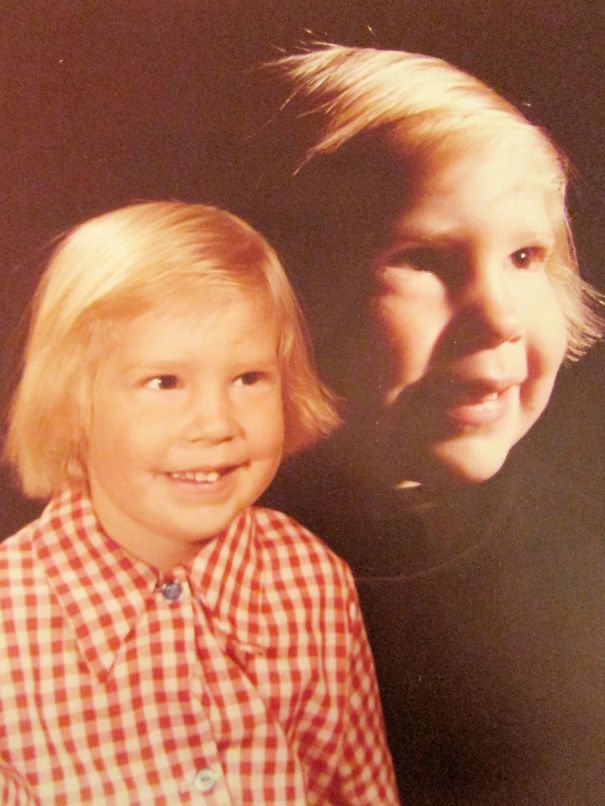
you were so beautiful and sweet. Love to you.
Load More Replies...leopard print pajama pants and a black tank top. I was 13. I woke up to it. I am terrified of sleep now.
In Sweden, the expression used in newspapers when writing about a sexual perpetrator is (no, I am not kidding) "her rapist". Her Rapist? FFS! Why not write "the man who attacked and raped her" instead? An act of sexual aggression does not bring the rapist into the intimate sphere of family and close friends.
If a woman in the UK is raped and reports it to the police she will have to hand over her phone and the passwords for facebook, twitter etc. HER every comment and photo will be poured over and whatever can be found will be used as evidence against ... her, the victim!
a 6 year old.....the little tinkerbell dress.... I feel so sick after seeing this. Does that mean the judge asked those little girls what they were wearing?? What is wrong with these people!?
Wow, I've never been asked this question and what's weird is all three times I can't remember at all. I guess I'm lucky and thankful no one has ever shamed me like that. Then again, I don't tell a lot of people or anything (except for right now I guess lol). Sadly, though, I know wayyy to many other victims, including several men. It's crazy how often this stuff actually does happen.
I’m sorry to hear that, Ashley. Thank you for opening up. It’s important for women to support each other and speak out so we know we’re not alone.
Load More Replies...Hi I am part of this community called Blank Noise which has spent over 10 years collecting garments and testimonials from victims of sexual assault in order to end victim blame. As a community member, I urge BoredPanda to give proper credit to the work which has been done by us and not publish articles without factual checks.
Oh wow!! Thank you for letting us know that this happened. I hope they credit you correctly and fact check from now on
Load More Replies...Powerful, and much too much to the point. The only victim who had never been asked "What were you wearing?" had instead been asked if he was gay ... Yes, men get raped too, and they are often in an even weirder position than female rape victims are. Now take a look at this: "The UN has backed a resolution on combatting rape in conflict but excluded references in the text to sexual and reproductive health, after vehement opposition from the US." (theguardian.com) and this: "The U.N. wanted to end sexual violence in war. Then the Trump adminisration had objections" (washingtonpost.com) Women need to participate more in politics, at all levels!
You need to hear what the specific objections were before commenting. Making it about gender is the lazy way out.
Load More Replies...I think that women could wear a chador and still get assaulted. The rapist is not necessarily a stranger who is suddenly tempted into losing control of himself. And if they have so little self-control, it's not the victim's fault. Men need to take responsibility for their behavior.
Women definitely get raped in chador. Chador is common in Iran where there are just as many rapes as every other country. (Not singling out Iran, I just know about chador in Iran because I’m Iranian)
Load More Replies...Hopefully this heartbreaking exhibition leads to the norm that the blame is never on the victims. It shouldn´t be needed anywhere, yet is it. And sadly the people who need to see this and understand this will never see it. I wore my normal clothes. Jeans and a tunic. Leggings,skirt and a tunic. Dress and leggings. Jeans again. But it shouldnt matter even if I was walking naked.
I would like to order to visit this exhibition as obligatory to our police. Cause this nauseating question is common from them. The police interview is then worse than the act I feel like in nightmare not in 21. century.
Load More Replies...Posts like this are 100% necessary, but also make me nauseous and I can't avoid tearing up. I kept searching my memories to see if I could remember what shirt I wore- but I do think it was a regular tshirt. That with jeans- I didn't wear dresses then. Now I pretty much exclusively wear dresses. Having it be someone who was my "friend," who had just moved in to a house with my best friend's boyfriend, at a house I'd gone to almost every day- I've been kind of working through it recently, acknowledging that he knew exactly what he was doing that evening. Because it really isn't about clothes. It's about people taking your autonomy, using your body without permission, and in some cases (mine included) acting like it's a compliment. And then people are confused when all you wear for the next several months is oversized hoodies because you need a friggin security blanket to just exist in society.
this makes me F ing sick Thats why rapist should be executed and thrown out like the trash they are
The children are in grave danger, especially since they may not even know what rape is.
I recall there was this case a while back that mentioned the woman's underwear... that could not be seen until the assault... sooooo..... even going by the person was wearing that or this faulty logic it made no f*****g sense cause I recall her outfit was not see through
so disgusted and sad for all of these people...i was just 6 the first time, 9 the next. both times i wore a t shirt and i don't remember what kind of long pants now. 1. old man 2. teenage boy
This was difficult to read, but so important. My support to all those who have suffered.
I was wearing a t-shirt and shorts the first time it happened. With the second person, I was wearing a tank top and shorts. And the third person, that was the first time I had worn a dress in almost 5 years. It took me another year before I could put on a dress without feeling like I was going to throw up.
Victim blaming has been going on for hundreds of years! It has got to stop! That. Question should be illegal to ask a rape or. Sexual assault victim.. male or female or a f*****g child! It is so biased to shift blame away from the perpetrator on to the victim. In this day and age, there needs to be legislation at the top level. A victim is never at fault. And saying no, means nothing. If a cop. Or lawyer asks the victim, what were you wearing? Let’s make this question illegal. Because what a victim wears, is not the reason they were sexually assaulted. Ever.
I was hoping the mind-set of blaming the victim for what they were wearing was long gone...
I believe this was made to show that clothes don’t matter! There is a wide variety of outfits.
Load More Replies...This just points out how ridiculouus and heartless is victim blaming. You don't need to provoke sex predator with "hot" clothes - they're sick people and of they decide to sexually assault someone, they'll do it, no matter what the victim is wearing or saying/doing. It makes me really sad and heartbroken that even today when we've made huge progress in human rights and protection, we still feel the need to judge the one that suffered - "you teased him, you deserved it", "you wore a mini skirt", "you're a man, you could have defended yourself" and so on.. shows just how much there is still to be worked on in regards to people's perception of sex crime.. and seeing children's clothing made me ill.
This article brought tears to my eyes. Its sad that this is a thing & seeing the children's clothes nearly broke me.
It absolutely broke my heart to see the cute little dresses belonging to the 5-year-old and 6-year-old... It takes a horribly sick person to rape anybody, but to rape a child? That's some next-level awfulness. My 14-year-old friend/neighbor was raped a few months ago and I will never forget the sight of the police at her house. Words cannot describe how terrible, how completely awful it is.
"What were you wearing?" What a bunch of bulls###! None of those women was dressed provocatively - not even the one who was wearing a bikini, and she had every reason to be dressed that way. “Army ACU’s and I was carrying a gun. So much for that preventing anything” - take THAT, gun nuts! There goes another of your arguments. I don't object to the right to own firearms, but gun extremists need to get a clue.
People who say you got assaulted because of what you were wearing are #1 on my list to c**k punch. It makes me so angry that I'm shaking so hard that I can hardly type. On his fox show, that huckabee POS once went on and on about how it's woman's fault for dressing provocatively. I almost defenestrated the TV. Someone should defenestrate him.
This is very sad. We have to remember that there is still good in this world, along with the bad.
I've been trying to think of any other crime that the victims choice of clothing would be relevent. Point being, even from a police investigation standpoint, there are none and it's not relevant here either.
Perhaps a robbery? I guess I’ve heard people victim blame rich or rich-appearing people for flashing around money or wearing fancy clothes, that they look like a good target. I’m not sure if that’s a fair example. I’m just saying that SOME PEOPLE (not me) make this argument.
Load More Replies...This is unfortunately common and the Catholic Church needs to do something about it
Load More Replies...Also- @Varanus Ex and @L.E.N, what the actual living, breathing, s******g, dying f**k is wrong with you people? I'm not so sure you'd be very happy if someone shoved their d**k/breast into you and then walked away laughing, would you? And ok if you would be, you're a little f'ed up, ngl. I get that somewhere along the line of your lives, someone might have drawn a scribble, but why the f**k are you on this post that is trying to support people hurting from a traumatic event just telling people "Lol, your story sounds like a doctor porno" (WTAF) "Just get over it" and "Holy - is your entire family rape-bait, or are you just full of s**t...?" Like WHAT THE ACTUAL S**T, THIS IS TRAUMATIC FOR PEOPLE YOU DISGUSTING M***********G SCUM OF THE UNIVERSE PEOPLE??? WHO HURT YOU THIS DAMN MUCH? I'll f*****g pray for you to get a new mind. This disgusts me. If something like this happened to you, how would you feel?
I feel horrible for the men and women who had to go through this. I know a guy who was drugged and tied to his bed while being raped by multiple drunk women. A girl I know was fingered at the age of seven, and my cat was even forced to suck on his former owner's penis. Rape is awful, and it leaves scars that never go away.
I don't know how people can even ask that question. Victim blaming for sexual assault seems to be the norm. Sometimes the rapist will say the victim flirted with him or came on to him (or her). That's sickening for an adult survivor of rape, but a child? As someone else said, "the 6 year old with the sun dress made me ill".
What do they expect people to say they were wearing, titty pasties and a thong? So irrelevant I can't even express it.
I was 4 or 5 years old, he was 13. I had my favorite outfit on; my green jean top and a red jean skirt. I was at the babysitter's house. I trusted her, him, my sister, and the babysitter's daughters. The door was open and I was screaming for help because for some odd reason, I knew what was going on. They kept walking past the open door, responding to my screams with "go get so-an-so." "go get so-and-so.", passing it on from one of them to the other. Our babysitter was asleep downstairs, on the couch. To this day I don't trust people to help me when I ask for it, so I just don't. I don't let people help me because of that. I also get extremely anxious if I'm left alone with a dude. Or with a single person, for that matter. I get anxious and start shaking and crying if I am left alone, too, because it is always at the back of my mind, stabbing at me ever so subtly, so when I'm alone, that's all I can think about. I confided this to my dad. His response? "Just don't think about it."
I felt so safe there, too. I also panic when someone tries to give me a hug. My dad was also angry that I didn't tell him until then because "He could be out there, as a youth pastor or someone in a position of power over little girls and boys, doing to them what he did to them! He could be arrested for that." That DEFINITELY did not help. Parents, if your child confides something like this to you, listen to them. Don't guilt them or make them feel even more guilty and shameful. Do not shame them for feeling shameful. Just be there to support them, for f**k's sake. It hurts, Ok? And if you tell your kid that you'll get them a counseling session to talk about it, f*****g do it. I still feel disgusted and disgusting and helpless and shameful. I'm still feeling suicidal BECAUSE OF THAT. But I can't tell anyone that, because 1) They'll send me to a mental hospital or something and 2) I'm the "bubbly" one, and if I try to talk about deep stuff, I'm shamed for it. I f*****g hate myself.
Load More Replies...This happened to my mom when she was a kid and it was done by her stepfather and a man at church. Physical affection is hard for her, but she never refuses my siblings and I a hug. I don't think it should really matter what the person was wearing, it's wrong no matter what. When a person is raped and the authorities only concern is what they were wearing, the system has already failed them. PLEASE STOP BLAMING THE VICTIM FOR THE DEPRAVED AND VILE ACTIONS OF AN EVIL PERSON.
It doesn't make a difference of what your wearing.... Sick monsters sexual assault babies and old ppl all the time. Tell me that what they are wearing is so tempting!? Yeah, makes me sick and puke! To have this up for ppl to read and such is to me pointless and no point! What is the f****n point!? IT DOES'NT MATTER WHAT YOUR WEARING!
This is the single most powerful topical landing page I have ever seen on B.P. Wow. How to amplify and get broader exposure for this powerful message?
I cried as I read this. To think people believe it is okay to ask such a thing. If I knew someone who had gone through this horrific thing, I would have asked if I could give them a hug. Then, say if they ever needed to talk, I was there. I would say I'm sorry and that they didn't ask for it nor deserved it. It's not okay to make them feel like it was their fault. This from a sexual abuse victim. It started when I was 7/8 and it was my grandfather. So, I know. It's not great being a statistic.
Wow. Just wow. That is crazy. It is so stereotypical that people think you have to be wearing a certain thing when raped. Seriously, this is heartbreaking and sad that SO MANY people had to go through this trauma.
I was 10 - wearing a pink shirt and gray sweats, my brothers bsf invited me over- I regret ever going, I wish I never met him, the worst part about this is my family still doesnt believe me. And he is still friends with the same guy, and he is still trying to touch me to this day. Im a guy it happens to everybody, not just women
My daughters were victims of sexual assault. For years my youngest daughter wanted nothing to do with being a ‘girl’ and now has severe self esteem issues. My other daughter is an eon the road to becoming an extreme feminist and is very BIG on not being defined by her clothes. Also is with the free the boob movement and doesn’t like to wear bras. As a parent of sexual abuse victims, I want them to ‘cover’ themselves because the world is a nasty place. But then there is the flip side that I want to teach them they should not be targets because of their clothes!!! Thank you for this. I will continue to educate them in being Free, Modest young women. Clothing doesn’t stop the devil!
Any where this is posted you'll see comments from men who don't believe raping people or assaulting children sexually is a crime. They excuse, they deflect, they justify. If I was a man I'd go out of my way to fight and argue against that but it seems like mostly women are doing it. Wonder why that is.
These hateful people have been reported. Varanus Ex and the others. Just thought I'd let people know
Victim blamers of all types are the worst. Oh, and people who try to imply "you took it the wrong way". I've never actually been sexually assaulted/harassed, but I've had someone grab my backpack at school and pull on it. When telling a teacher, she told me "I don't want to excuse his behavior, but maybe he's just being playful". No, you absolute dipsh*t.
This nearly brings me to tears, anyone trying to insinuate people are at fault at all because of what clothes they were wearing is despicable, mis-guided and beyond insulting. I hope they can all find some peace in their lives.
Am absolutely numb after finishing this article . May all victims find solace xx
Too sad. There are too many people in our world that think they have the right to take anything they want... innocence, security, safety... and then to demean the victims afterwards, by asking what they were wearing???? Sickening!
I shouldn’t have read this. It makes me sick. Especially the little kids. There’s no adequate justice in this life for the perpetrators. Maybe death… The trauma of sexual abuse is like killing someone without killing them. I hate this world…
The first time, I was wearing my school uniform (polo shirt and khaki slacks, 5th grade). The second time I was wearing a t-shirt and cargo shorts (6th grade). I am AFAB and i now do not feel safe around guys my age if I’m wearing anything shorter or more skin tight than an oversized t-shirt and baggy cargo shorts
this truly shows the horror of sexual assault, and i was so sad because i recognized the jayhawks logo
My mother keeps telling me that I'm going to be raped one day or be placed in the back of a van because I look younger than my actual age and that I wear short skirts (slightly longer than mini-skirts). I'm 21-
I don't see a burka on the exhibit. The sari comes closest. Outside of the possibly the sari, every picture above shows immodest clothing. The question isn't exactly what was worn, but the relative chance that a person would be raped if the person was wearing immodest clothing.
I don't see a burka on the exhibit. The sari comes closest. Outside of the possibly the sari, every picture above shows immodest clothing. The question isn't exactly what was worn, but the chance that a person would be raped if the person was wearing immodest clothing.
First time, school uniform Second time, tshirt and jeans Third time, tshirt and jeans Fourth time, pyjamas
I was.. maybe six or seven, likely in a bright pink tee shirt and kapris. I thought my cousin was gonna share the secret passcode to a cool teenager club. I was wrong. Luckily for me, I’ve repressed the memory and it’s extremely faint now. I’m fairly certain I was sick at the time though.
Meanwhile, here in San Francisco men walk around completely naked and don't get assaulted. Though I'd like to punch them in the face because: GROSS.
When are the people in this country going to realize that it isn't the clothes or gun,bat ,knife car that's the problem.the people in this country love to blame an inanimate object and not the real problem which is the person that is doing it.how is it that a whole lot of people in this country do not realize that.
i get the feeling some of you didn't read what the exhibit is about. OF COURSE you should not ask a vicim that question because it doesn't matter what they where wearing, it's a horrible crime BUT and that is the point; it is often sais that the victim could have prevented it by not DRESSING TOO SEXY for example...it's about showing them that it was not their fault because of the way they dress,,, however maybe don't just ask that if you're not a psychiatrist
I think there are a lot of victims that are genuine victims where there did nothing to provoke their attacker BUT there are a small number of people that will flaunt their bodies, will flirt back, will show their cleavage, wear tight clothing to look 'sexy' that end up getting attacked - I'm not saying that these victims deserved being attack but they did put themselves more at risk...it would be like wearing a t-shirt saying "I'm easy". Why wearing a t-shirt that advertises you are easy to get in bed but then say you don't want it and play hard to get? Unfortunately most people do focus on the women wearing skimpy clothing, dolled up to the nines, sexy curves and say they are at fault for dressing the way they do (which arguably if you are dressing to look sexy, inviting and draw attention then expect advances - again no means no but you shouldn't dress to be a tease)... however, there are so many 'ordinary' people who lose their identities because of rape.
That’s extremely condescending and rude. So inappropriate.
Load More Replies...youre a horrible person. Sexual assault is not something you can just get over. It is traumatizing. we are not being whiny bitches about it. we are spreading awareness. speaking our truth. maybe even helping others along the way. people like you make us believe we shouldn't feel the way we feel. we were forced against our will to endure something we didnt want to endure. nightmare fuel. no means no. I wish nothing bad upon you. but please do not try to act like sexual assault is something you can brush off your shoulder.
Load More Replies...How about not sexualizing FIVE year old children?
Load More Replies...These aren’t the items of clothing. They are similar clothing.
Load More Replies...Yeah, I know what you mean :( And the five year old as well.
Load More Replies...This is really deep and heartbreaking. What an asinine question to ask someone after going through a nightmare.
Clarification - I didn't mean the exhibit! I mean real people who ask the victims this question.
Load More Replies...You should never, ever ask a sexual abuse victim what they were wearing. It is extremely hurtful and it's not relevant: even if someone was wearing a supersexy dress or bikini or whatever, she still has the right to choose whether she does or doesn't want to have sex.
That is the whole point of the exibition. To show that which clothes you wore have nothing to do with the experience.To shift blame from victims to rapists
Load More Replies...Notice the university T-shirt and cargoes one? I think that's a man, and his point is that men don't get asked this particular question, and that fact lays bare how illogical and stupid the question is. His words are important and wise, I think. Of course, the other things he DID get asked are equally problematic.
This is true. It seems people will find all kinds of ways to blame the victim rather than the rapist. I think they do this as a way of telling themselves it could never happen to them, because they would have been dressed correctly, but of course, that’s an equally ridiculous idea, too. There’s no dress code for rape.
Load More Replies...I was wearing a hoodie and leggings. My mother was wearing a T-shirt and jeans. My best friends was wearing a Halloween costume that covered her almost from neck to toe. It's not about the clothes. Let's just pretend that all the victims were actually wearing revealing clothes. Even then it wouldn't make it acceptable.
I'm so sorry alia. That's making me feel sad, that there is somewhere, where this can happen, so often... To too many women...
Load More Replies...Thanks for including boys and men. This is not just a girl/woman problem. This is a problem that knows no age, race, or gender.
So so true Bob. I know several men who have gone through this also. One man I know went through this by two different people. One was from his female babysitter when he was a little boy and the other was once from a gay man when he was an adult. So, I agree with you.
Load More Replies...Keep your filthy, selfish hands to your damn self. Plain and simple. To blame clothes is to avoid responsibly. We wonder why we live in a massive rape culture...
It's the whole culture of victim blaming, especially when the victim is a woman and the attacker is a man, although there are plenty of female attackers and male victims out there too. There was a post which came out some time back which got to me " 'Was it my fault?' asked the mini skirt. 'No' said the burka, 'it happened to me too.' The diaper in the corner couldn't even speak."
" 'Was it my fault?' asked the mini skirt. 'No' said the burka, 'it happened to me too.' The diaper in the corner couldn't even speak."
Load More Replies...the five year old and the six year old......... don't understand how people could be so cold-hearted and selfish
Clothing didn't get these people sexually assaulted. Sexual assaulters got these people sexually assaulted.
I was wearing jeans and a tank top. I don't know whatever happened to them. I was told I had it coming and I wasn't a good Christian. I no longer believe
You did nothing wrong. The people who said that are sick and ignorant. I'm so sorry. None of those things should have happened to you.
Load More Replies...I was attacked. By a friends roommate, I fought, Hard & got away. Called my dad to pick me up bc I was 18 with no car. I'll never forget my father, my hero, looking at me & saying "Well, look at what you're wearing." It was summer, my friend & I were going to the beach. It was a swimsuit & shorts.
First of all I’m glad you were able to get away. Second of all, do you feel like your fathers response was worse than the attack? It seems so hurtful and scary that the man who is supposed to protect you and teach you would blame you. It makes me so sad. How are things between you and him now?
Load More Replies...I don't understand why not more men rage against this 'What was she wearing'. because what this essentially claims is, that all men are rapists, have as little control as an animal and they can only excert control over their sexual instinct if the woman is properly covered.
As recently as November 2018 a FEMALE defense attorney defended a 23 years old rapist: Defense attorney Elizabeth O’Connell highlighted the fact that the 17-year-old victim was wearing thong underwear the night she alleged she was assaulted. "Does the evidence out-rule the possibility that she was attracted to the defendant and was open to meeting someone and being with someone? You have to look at the way she was dressed,” O’Connell said. “She was wearing a thong with a lace front.” As long as these arguments are honoured in a court of law, there's a very long way to go to achieve a civilisation where there's no excuse for rape.
Why does it f*****g matter what she wears? Even if she’s walking around butt naked it’s not an invitation to rape her. Even if she is clearly flirty and maybe even looking for a casual fling, it doesn’t mean rape her. Stop shaming women and teach men self control.
As someone who was raped as a child and is now a senior citizen, I can tell you they’re marginally better than those who ended up killing themselves, but they’re not okay. You learn to live with it, but the guilt and shame don’t wash off.
Load More Replies...I really think if people belive the victim is responsible then you must be rape sympathisers. You can't blame clothing on a crime.
I am really upset now, I feel for these HUMAN BEINGS. There are some sick people out there. I just hope that I'm a good enough human for someone to tell me if that happens to them because I will do everything and anything to get justice.
what a powerful exhibit. I have chills up and down me and shocked to see more than one outfit sometimes per person.
I was wearing my work clothes, I worked in a take away cafe, a loose uniform shift dress, a filthy apron covered in grease & flour, sneakers & socks, a hairnet with a white paper cap. I stank of fried food, cooking oil, meat, I was 15 when I was raped. I was wearing a long red skirt & a white jumper when I was assaulted but not raped by a neighbour at a neighbourhood Christmas party, I was 12. I was sexually assaulted by my boyfriends brother at a family celebration. I was wearing a simple modest black cocktail dress. He burst through the locked bathroom door while I was on the toilet, he started tearing my clothes, dragging me onto the floor, he was very big he tried to gag me I bit him I screamed & kicked, all I could think was, oh god I'm going to be raped in a puddle of my own urine, Someone had heard my screams over the music . What were you wearing dates from an awful time when it was assumed the Victim "asked for it" because they were dressed provocatively.
And yet in Ireland a victim can be blamed for her rape because of what she wore and the accused gets found innocent. Her underwear was used as an example to shame her and put the blame on her. When is the way you choose to dress going to become irrelevant? It’s your body, use it, have fun with it, change it, tattoo it, pierce it, every now and again be kind to it but always remember it’s yours alone to do with it as you will, no one has any right to it no matter what you wear, no matter where you are. Irish outcry over teenager's underwear used in rape trial http://www.bbc.co.uk/news/world-europe-46207304
This is such a grotesque yet illuminating presentation. It is disgusting that a western society still has the audacity to associate and judge any rape with what the victim was wearing. As if it ever excuses such a vile act. The little children ones made me sick.
I was wearing my waitress uniform of black pants and a green shirt.
Sent this to my son and his girlfriend- they are working with the school district to de-sexualize the district dress code. This exhibition proves that sexual violence has nothing to do with the clothing the victim is wearing that day.
This post is the first one on here that actually brought tears to my eyes.
Don’t listen to Varanus Ex! It’s just being a d**k <3
Load More Replies...Varanus Ex and L.E.N. Yeah, be disgusting humans all you want, because there are HUNDREDS of people on here sympathizing with rape victims. You’re just a couple of trolls. How you can act like this to survivors of something so horrible is beyond me, but thank god most people here care about the people that have been assaulted, and not your brainless trolling.
varanus ex and L.E.N. You are both disgusting, vile human beings. You both seriously need some psychological help or are in fact rapists yourselves and trying to defend your actions. You are certainly not someone whose parents would be proud of if they knew you acted in this manner. They are probably wishing you were swallowed. Do the world a favour and NEVER EVER procreate and if sadly in fact you already have then I truly hope your kids discover the truth of your disgusting behaviour and want nothing to do with you. And I hope they don’t have to suffer with rape or molestation coz they certainly wouldn’t have understanding parents. Although I wouldn’t be surprised if you two where the culprits. If there is indeed a hell, when you die I hope you suffer for the end of your days in that fiery pit. You are both absolutely disgusting.
Lmao, you are seriously delusional. Shoo fly, your bothering society.
Load More Replies...We need to talk to our boys about sexual assault. Every rapist has a mother.
And we need to talk to our girls about it, too. We need to explain how horrible it is to everyone; make everyone aware of it. Men can rape men and women, and women can also rape men and women. No one is subject to it, and no one is prevented from it.
Load More Replies...I'm always so confused why, in discussions of rape, the perpetrator isn't addressed. The person commiting these crimes are OUR sons, husbands, brother, I am not talking about incest. We don't teach our boys about "enthusiastic consent". It should b taught in "health" class. Ya think?
It absolutely should be taught about in health class! As should the fact that if the other person is really drunk or high, they might not be capable of giving consent
Load More Replies...i hate comment which blame their clothes and quote some religious s**t.. its all about monster in the rapist head!..
The prom one hurts, that should be one of the best memories of high school. but young kids can be incredibly stupid. (I mean the rapists NOT the victims.)
It's not only fellow school colleagues. A girl walking home from a prom party can get assaulted by a perfect stranger as well.
Load More Replies...Really, I dont understand the question about dress. I was wearing medical smock and trousers with wax and acid flecks and was sexyyy as a pregnant worm, when I was attacked by my teacher during last day practice exam before school-leaving public audience. Moreover, I was holding my final work - complete denture in my hand. The tendency to move the responsibility to the victim makes me sick.
Varanus... You are worthless. You know what? You can be racist and hateful as long as you want, but that still won’t change the fact that nearly every other person here offered support for the victims of these horrible crimes. You are just one troll and an obvious one at that.
Load More Replies...Death or incarceration are punishments that allow these bastards to get off easy. Anyone who rapes, assaults, molests, or murders another human being should never be given the easy way out. They should all suffer the fear and pain their victims did, but with the intensity increased to the point where they almost die, but are left alive, only to go through it again a day later. Hell is too good for these sick f***s, and the fact that many of them live in relative comfort, eating 3 meals a day, is disgusting.
And rapists like Brock Turner continue to get away easily because they're white and their parents are rich
Load More Replies...This makes me sick. Edit: The actions the aggressors did and the clothing question, not the exhibit.
It’s so sad that we even need to raise awareness for that. I don’t like when people dress „slutty“ because most of the times, those I met who dressed that way turned out to be quite shallow, obnoxious people. So? I have a co-worker like that who I and most of my other co-workers dislike exactly for those reasons. Guess what, when he was attacked by a stranger because he dresses in a rather feminine way, we all were beside ourselves with fury and outrage nonetheless. You don’t hurt others no matter what they wear or look like or whether you like them or not, how is it even necessary to point that out? No person in their right mind can convince me that they genuinely believed it would be okay to rape someone just because of their clothing. If someone‘s clothes „made“ you rape them, you belong in a mental home. Other than that, the one with the guy who was asked how he could „let that happen“ is devastating. Perfect example of how men are just as deprived as women, just in other areas.
An ankle length skirt and a baggy "blur" t shirt - my own mother asked the "what were you wearing" question, after that I decided not to tell anyone else. 26 years later, it's a bit easier. I was recently able to talk to my mother about the way her reaction affected me at the time and she was genuinely sorry. It's weird posting about this, it's not something I talk about, ever.
Thank you for sharing this with us, you're so strong for having survived that!
Load More Replies...I don't know which makes me gloomier: these unlucky people sharing their awful stories or those absurd people that blame rape victims. This seems to be the norm about our species and shows our kind is on average so dumb, it's hard for me to handle! When I first heard about rape(I was perhaps 9-10), my two only reactions were feeling sorry about the victims and wishing all rapers to die, for I generally wish for all stupid and useless human beings to die out. I never even for a moment thought about blaming victims! Why would anyone decide to do that on their own accord? It's against both logic and people's favourite emotions! Yet, there they were, I found out later. Millions of those people, taunting those that were under attack! It's bloody disgusting, unintelligent, nearly as bad as the rape itself. Because many victims do believe the ill-sayers! That's really the only thing I would ever blame some victims for: naively believing in what the species that has just betrayed them says.
People sick me so much with those barbarians acts.when someone is wearing a u uniform like that a soldier. He is giving his life for the country, and yet something so horrible happens. And to every victim. There are no words to express my anger n frustration with when it comes to that kind of injustice.
This proves it really makes no difference what you where. A motherf****er is still gonna rape you if that's what on his mind. It's not about sexy clothes, it's about power over another human.
Rosy A who I interviewed which you can read more about through https://aparentsworld.com/who-is-rosy-a/(opens in a new tab) was a young child whilst raped by a neighbour, usual child wearing shorts and t-shirt riding her bike. A few years later wearing jeans and a t-shirt her cousin by marriage put his penis in her mouth when he thought he blindfolded her.
Maybe you meant public, but pubic seems appropriate.
Load More Replies...it started when I was 4 and half. I'd say about 6 months-ish after this picture was taken. This is one of the last photos of me as a child where I was still happy. It was 1980 so I imagine I was wearing something similar to the style of the shirt in this picture. Probably jeans or shorts. IMG_1772-5...c7fc95.jpg 
you were so beautiful and sweet. Love to you.
Load More Replies...leopard print pajama pants and a black tank top. I was 13. I woke up to it. I am terrified of sleep now.
In Sweden, the expression used in newspapers when writing about a sexual perpetrator is (no, I am not kidding) "her rapist". Her Rapist? FFS! Why not write "the man who attacked and raped her" instead? An act of sexual aggression does not bring the rapist into the intimate sphere of family and close friends.
If a woman in the UK is raped and reports it to the police she will have to hand over her phone and the passwords for facebook, twitter etc. HER every comment and photo will be poured over and whatever can be found will be used as evidence against ... her, the victim!
a 6 year old.....the little tinkerbell dress.... I feel so sick after seeing this. Does that mean the judge asked those little girls what they were wearing?? What is wrong with these people!?
Wow, I've never been asked this question and what's weird is all three times I can't remember at all. I guess I'm lucky and thankful no one has ever shamed me like that. Then again, I don't tell a lot of people or anything (except for right now I guess lol). Sadly, though, I know wayyy to many other victims, including several men. It's crazy how often this stuff actually does happen.
I’m sorry to hear that, Ashley. Thank you for opening up. It’s important for women to support each other and speak out so we know we’re not alone.
Load More Replies...Hi I am part of this community called Blank Noise which has spent over 10 years collecting garments and testimonials from victims of sexual assault in order to end victim blame. As a community member, I urge BoredPanda to give proper credit to the work which has been done by us and not publish articles without factual checks.
Oh wow!! Thank you for letting us know that this happened. I hope they credit you correctly and fact check from now on
Load More Replies...Powerful, and much too much to the point. The only victim who had never been asked "What were you wearing?" had instead been asked if he was gay ... Yes, men get raped too, and they are often in an even weirder position than female rape victims are. Now take a look at this: "The UN has backed a resolution on combatting rape in conflict but excluded references in the text to sexual and reproductive health, after vehement opposition from the US." (theguardian.com) and this: "The U.N. wanted to end sexual violence in war. Then the Trump adminisration had objections" (washingtonpost.com) Women need to participate more in politics, at all levels!
You need to hear what the specific objections were before commenting. Making it about gender is the lazy way out.
Load More Replies...I think that women could wear a chador and still get assaulted. The rapist is not necessarily a stranger who is suddenly tempted into losing control of himself. And if they have so little self-control, it's not the victim's fault. Men need to take responsibility for their behavior.
Women definitely get raped in chador. Chador is common in Iran where there are just as many rapes as every other country. (Not singling out Iran, I just know about chador in Iran because I’m Iranian)
Load More Replies...Hopefully this heartbreaking exhibition leads to the norm that the blame is never on the victims. It shouldn´t be needed anywhere, yet is it. And sadly the people who need to see this and understand this will never see it. I wore my normal clothes. Jeans and a tunic. Leggings,skirt and a tunic. Dress and leggings. Jeans again. But it shouldnt matter even if I was walking naked.
I would like to order to visit this exhibition as obligatory to our police. Cause this nauseating question is common from them. The police interview is then worse than the act I feel like in nightmare not in 21. century.
Load More Replies...Posts like this are 100% necessary, but also make me nauseous and I can't avoid tearing up. I kept searching my memories to see if I could remember what shirt I wore- but I do think it was a regular tshirt. That with jeans- I didn't wear dresses then. Now I pretty much exclusively wear dresses. Having it be someone who was my "friend," who had just moved in to a house with my best friend's boyfriend, at a house I'd gone to almost every day- I've been kind of working through it recently, acknowledging that he knew exactly what he was doing that evening. Because it really isn't about clothes. It's about people taking your autonomy, using your body without permission, and in some cases (mine included) acting like it's a compliment. And then people are confused when all you wear for the next several months is oversized hoodies because you need a friggin security blanket to just exist in society.
this makes me F ing sick Thats why rapist should be executed and thrown out like the trash they are
The children are in grave danger, especially since they may not even know what rape is.
I recall there was this case a while back that mentioned the woman's underwear... that could not be seen until the assault... sooooo..... even going by the person was wearing that or this faulty logic it made no f*****g sense cause I recall her outfit was not see through
so disgusted and sad for all of these people...i was just 6 the first time, 9 the next. both times i wore a t shirt and i don't remember what kind of long pants now. 1. old man 2. teenage boy
This was difficult to read, but so important. My support to all those who have suffered.
I was wearing a t-shirt and shorts the first time it happened. With the second person, I was wearing a tank top and shorts. And the third person, that was the first time I had worn a dress in almost 5 years. It took me another year before I could put on a dress without feeling like I was going to throw up.
Victim blaming has been going on for hundreds of years! It has got to stop! That. Question should be illegal to ask a rape or. Sexual assault victim.. male or female or a f*****g child! It is so biased to shift blame away from the perpetrator on to the victim. In this day and age, there needs to be legislation at the top level. A victim is never at fault. And saying no, means nothing. If a cop. Or lawyer asks the victim, what were you wearing? Let’s make this question illegal. Because what a victim wears, is not the reason they were sexually assaulted. Ever.
I was hoping the mind-set of blaming the victim for what they were wearing was long gone...
I believe this was made to show that clothes don’t matter! There is a wide variety of outfits.
Load More Replies...This just points out how ridiculouus and heartless is victim blaming. You don't need to provoke sex predator with "hot" clothes - they're sick people and of they decide to sexually assault someone, they'll do it, no matter what the victim is wearing or saying/doing. It makes me really sad and heartbroken that even today when we've made huge progress in human rights and protection, we still feel the need to judge the one that suffered - "you teased him, you deserved it", "you wore a mini skirt", "you're a man, you could have defended yourself" and so on.. shows just how much there is still to be worked on in regards to people's perception of sex crime.. and seeing children's clothing made me ill.
This article brought tears to my eyes. Its sad that this is a thing & seeing the children's clothes nearly broke me.
It absolutely broke my heart to see the cute little dresses belonging to the 5-year-old and 6-year-old... It takes a horribly sick person to rape anybody, but to rape a child? That's some next-level awfulness. My 14-year-old friend/neighbor was raped a few months ago and I will never forget the sight of the police at her house. Words cannot describe how terrible, how completely awful it is.
"What were you wearing?" What a bunch of bulls###! None of those women was dressed provocatively - not even the one who was wearing a bikini, and she had every reason to be dressed that way. “Army ACU’s and I was carrying a gun. So much for that preventing anything” - take THAT, gun nuts! There goes another of your arguments. I don't object to the right to own firearms, but gun extremists need to get a clue.
People who say you got assaulted because of what you were wearing are #1 on my list to c**k punch. It makes me so angry that I'm shaking so hard that I can hardly type. On his fox show, that huckabee POS once went on and on about how it's woman's fault for dressing provocatively. I almost defenestrated the TV. Someone should defenestrate him.
This is very sad. We have to remember that there is still good in this world, along with the bad.
I've been trying to think of any other crime that the victims choice of clothing would be relevent. Point being, even from a police investigation standpoint, there are none and it's not relevant here either.
Perhaps a robbery? I guess I’ve heard people victim blame rich or rich-appearing people for flashing around money or wearing fancy clothes, that they look like a good target. I’m not sure if that’s a fair example. I’m just saying that SOME PEOPLE (not me) make this argument.
Load More Replies...This is unfortunately common and the Catholic Church needs to do something about it
Load More Replies...Also- @Varanus Ex and @L.E.N, what the actual living, breathing, s******g, dying f**k is wrong with you people? I'm not so sure you'd be very happy if someone shoved their d**k/breast into you and then walked away laughing, would you? And ok if you would be, you're a little f'ed up, ngl. I get that somewhere along the line of your lives, someone might have drawn a scribble, but why the f**k are you on this post that is trying to support people hurting from a traumatic event just telling people "Lol, your story sounds like a doctor porno" (WTAF) "Just get over it" and "Holy - is your entire family rape-bait, or are you just full of s**t...?" Like WHAT THE ACTUAL S**T, THIS IS TRAUMATIC FOR PEOPLE YOU DISGUSTING M***********G SCUM OF THE UNIVERSE PEOPLE??? WHO HURT YOU THIS DAMN MUCH? I'll f*****g pray for you to get a new mind. This disgusts me. If something like this happened to you, how would you feel?
I feel horrible for the men and women who had to go through this. I know a guy who was drugged and tied to his bed while being raped by multiple drunk women. A girl I know was fingered at the age of seven, and my cat was even forced to suck on his former owner's penis. Rape is awful, and it leaves scars that never go away.
I don't know how people can even ask that question. Victim blaming for sexual assault seems to be the norm. Sometimes the rapist will say the victim flirted with him or came on to him (or her). That's sickening for an adult survivor of rape, but a child? As someone else said, "the 6 year old with the sun dress made me ill".
What do they expect people to say they were wearing, titty pasties and a thong? So irrelevant I can't even express it.
I was 4 or 5 years old, he was 13. I had my favorite outfit on; my green jean top and a red jean skirt. I was at the babysitter's house. I trusted her, him, my sister, and the babysitter's daughters. The door was open and I was screaming for help because for some odd reason, I knew what was going on. They kept walking past the open door, responding to my screams with "go get so-an-so." "go get so-and-so.", passing it on from one of them to the other. Our babysitter was asleep downstairs, on the couch. To this day I don't trust people to help me when I ask for it, so I just don't. I don't let people help me because of that. I also get extremely anxious if I'm left alone with a dude. Or with a single person, for that matter. I get anxious and start shaking and crying if I am left alone, too, because it is always at the back of my mind, stabbing at me ever so subtly, so when I'm alone, that's all I can think about. I confided this to my dad. His response? "Just don't think about it."
I felt so safe there, too. I also panic when someone tries to give me a hug. My dad was also angry that I didn't tell him until then because "He could be out there, as a youth pastor or someone in a position of power over little girls and boys, doing to them what he did to them! He could be arrested for that." That DEFINITELY did not help. Parents, if your child confides something like this to you, listen to them. Don't guilt them or make them feel even more guilty and shameful. Do not shame them for feeling shameful. Just be there to support them, for f**k's sake. It hurts, Ok? And if you tell your kid that you'll get them a counseling session to talk about it, f*****g do it. I still feel disgusted and disgusting and helpless and shameful. I'm still feeling suicidal BECAUSE OF THAT. But I can't tell anyone that, because 1) They'll send me to a mental hospital or something and 2) I'm the "bubbly" one, and if I try to talk about deep stuff, I'm shamed for it. I f*****g hate myself.
Load More Replies...This happened to my mom when she was a kid and it was done by her stepfather and a man at church. Physical affection is hard for her, but she never refuses my siblings and I a hug. I don't think it should really matter what the person was wearing, it's wrong no matter what. When a person is raped and the authorities only concern is what they were wearing, the system has already failed them. PLEASE STOP BLAMING THE VICTIM FOR THE DEPRAVED AND VILE ACTIONS OF AN EVIL PERSON.
It doesn't make a difference of what your wearing.... Sick monsters sexual assault babies and old ppl all the time. Tell me that what they are wearing is so tempting!? Yeah, makes me sick and puke! To have this up for ppl to read and such is to me pointless and no point! What is the f****n point!? IT DOES'NT MATTER WHAT YOUR WEARING!
This is the single most powerful topical landing page I have ever seen on B.P. Wow. How to amplify and get broader exposure for this powerful message?
I cried as I read this. To think people believe it is okay to ask such a thing. If I knew someone who had gone through this horrific thing, I would have asked if I could give them a hug. Then, say if they ever needed to talk, I was there. I would say I'm sorry and that they didn't ask for it nor deserved it. It's not okay to make them feel like it was their fault. This from a sexual abuse victim. It started when I was 7/8 and it was my grandfather. So, I know. It's not great being a statistic.
Wow. Just wow. That is crazy. It is so stereotypical that people think you have to be wearing a certain thing when raped. Seriously, this is heartbreaking and sad that SO MANY people had to go through this trauma.
I was 10 - wearing a pink shirt and gray sweats, my brothers bsf invited me over- I regret ever going, I wish I never met him, the worst part about this is my family still doesnt believe me. And he is still friends with the same guy, and he is still trying to touch me to this day. Im a guy it happens to everybody, not just women
My daughters were victims of sexual assault. For years my youngest daughter wanted nothing to do with being a ‘girl’ and now has severe self esteem issues. My other daughter is an eon the road to becoming an extreme feminist and is very BIG on not being defined by her clothes. Also is with the free the boob movement and doesn’t like to wear bras. As a parent of sexual abuse victims, I want them to ‘cover’ themselves because the world is a nasty place. But then there is the flip side that I want to teach them they should not be targets because of their clothes!!! Thank you for this. I will continue to educate them in being Free, Modest young women. Clothing doesn’t stop the devil!
Any where this is posted you'll see comments from men who don't believe raping people or assaulting children sexually is a crime. They excuse, they deflect, they justify. If I was a man I'd go out of my way to fight and argue against that but it seems like mostly women are doing it. Wonder why that is.
These hateful people have been reported. Varanus Ex and the others. Just thought I'd let people know
Victim blamers of all types are the worst. Oh, and people who try to imply "you took it the wrong way". I've never actually been sexually assaulted/harassed, but I've had someone grab my backpack at school and pull on it. When telling a teacher, she told me "I don't want to excuse his behavior, but maybe he's just being playful". No, you absolute dipsh*t.
This nearly brings me to tears, anyone trying to insinuate people are at fault at all because of what clothes they were wearing is despicable, mis-guided and beyond insulting. I hope they can all find some peace in their lives.
Am absolutely numb after finishing this article . May all victims find solace xx
Too sad. There are too many people in our world that think they have the right to take anything they want... innocence, security, safety... and then to demean the victims afterwards, by asking what they were wearing???? Sickening!
I shouldn’t have read this. It makes me sick. Especially the little kids. There’s no adequate justice in this life for the perpetrators. Maybe death… The trauma of sexual abuse is like killing someone without killing them. I hate this world…
The first time, I was wearing my school uniform (polo shirt and khaki slacks, 5th grade). The second time I was wearing a t-shirt and cargo shorts (6th grade). I am AFAB and i now do not feel safe around guys my age if I’m wearing anything shorter or more skin tight than an oversized t-shirt and baggy cargo shorts
this truly shows the horror of sexual assault, and i was so sad because i recognized the jayhawks logo
My mother keeps telling me that I'm going to be raped one day or be placed in the back of a van because I look younger than my actual age and that I wear short skirts (slightly longer than mini-skirts). I'm 21-
I don't see a burka on the exhibit. The sari comes closest. Outside of the possibly the sari, every picture above shows immodest clothing. The question isn't exactly what was worn, but the relative chance that a person would be raped if the person was wearing immodest clothing.
I don't see a burka on the exhibit. The sari comes closest. Outside of the possibly the sari, every picture above shows immodest clothing. The question isn't exactly what was worn, but the chance that a person would be raped if the person was wearing immodest clothing.
First time, school uniform Second time, tshirt and jeans Third time, tshirt and jeans Fourth time, pyjamas
I was.. maybe six or seven, likely in a bright pink tee shirt and kapris. I thought my cousin was gonna share the secret passcode to a cool teenager club. I was wrong. Luckily for me, I’ve repressed the memory and it’s extremely faint now. I’m fairly certain I was sick at the time though.
Meanwhile, here in San Francisco men walk around completely naked and don't get assaulted. Though I'd like to punch them in the face because: GROSS.
When are the people in this country going to realize that it isn't the clothes or gun,bat ,knife car that's the problem.the people in this country love to blame an inanimate object and not the real problem which is the person that is doing it.how is it that a whole lot of people in this country do not realize that.
i get the feeling some of you didn't read what the exhibit is about. OF COURSE you should not ask a vicim that question because it doesn't matter what they where wearing, it's a horrible crime BUT and that is the point; it is often sais that the victim could have prevented it by not DRESSING TOO SEXY for example...it's about showing them that it was not their fault because of the way they dress,,, however maybe don't just ask that if you're not a psychiatrist
I think there are a lot of victims that are genuine victims where there did nothing to provoke their attacker BUT there are a small number of people that will flaunt their bodies, will flirt back, will show their cleavage, wear tight clothing to look 'sexy' that end up getting attacked - I'm not saying that these victims deserved being attack but they did put themselves more at risk...it would be like wearing a t-shirt saying "I'm easy". Why wearing a t-shirt that advertises you are easy to get in bed but then say you don't want it and play hard to get? Unfortunately most people do focus on the women wearing skimpy clothing, dolled up to the nines, sexy curves and say they are at fault for dressing the way they do (which arguably if you are dressing to look sexy, inviting and draw attention then expect advances - again no means no but you shouldn't dress to be a tease)... however, there are so many 'ordinary' people who lose their identities because of rape.
That’s extremely condescending and rude. So inappropriate.
Load More Replies...youre a horrible person. Sexual assault is not something you can just get over. It is traumatizing. we are not being whiny bitches about it. we are spreading awareness. speaking our truth. maybe even helping others along the way. people like you make us believe we shouldn't feel the way we feel. we were forced against our will to endure something we didnt want to endure. nightmare fuel. no means no. I wish nothing bad upon you. but please do not try to act like sexual assault is something you can brush off your shoulder.
Load More Replies...How about not sexualizing FIVE year old children?
Load More Replies...These aren’t the items of clothing. They are similar clothing.
Load More Replies...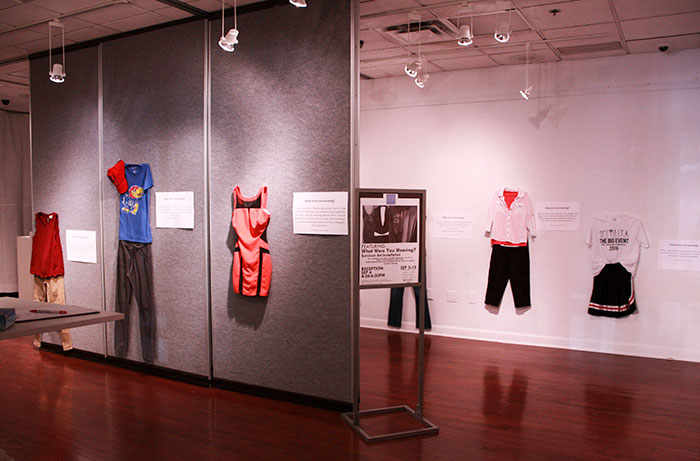
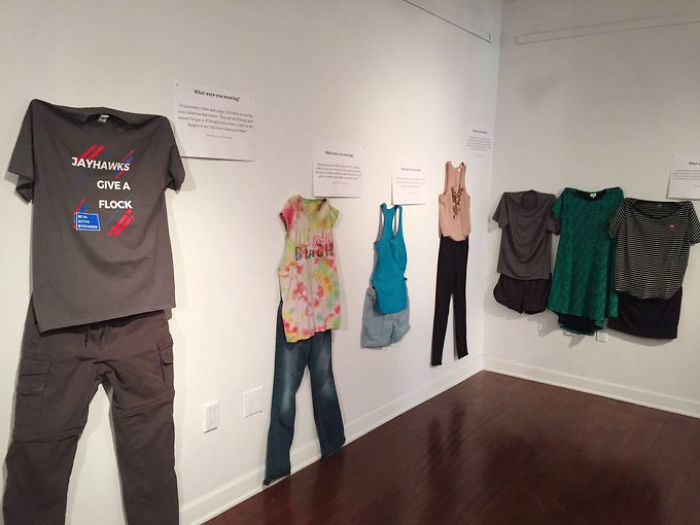
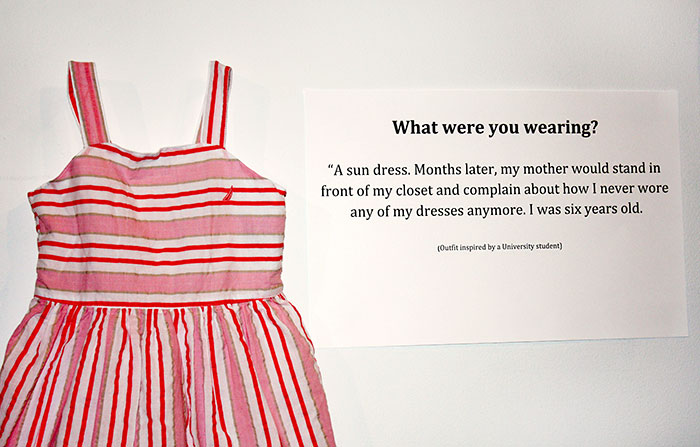
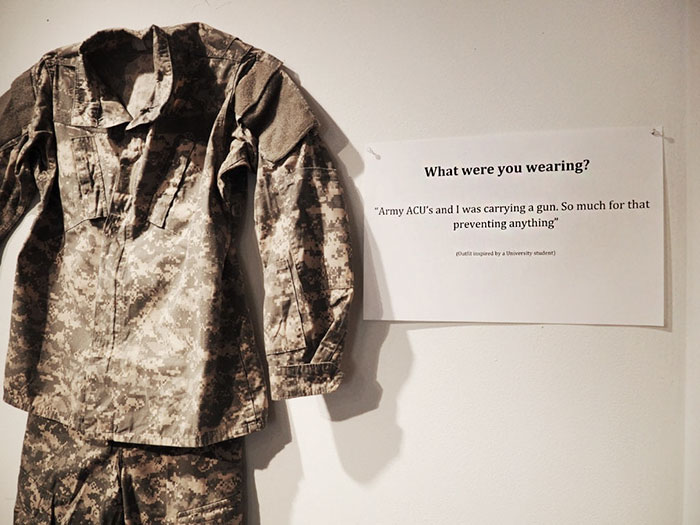
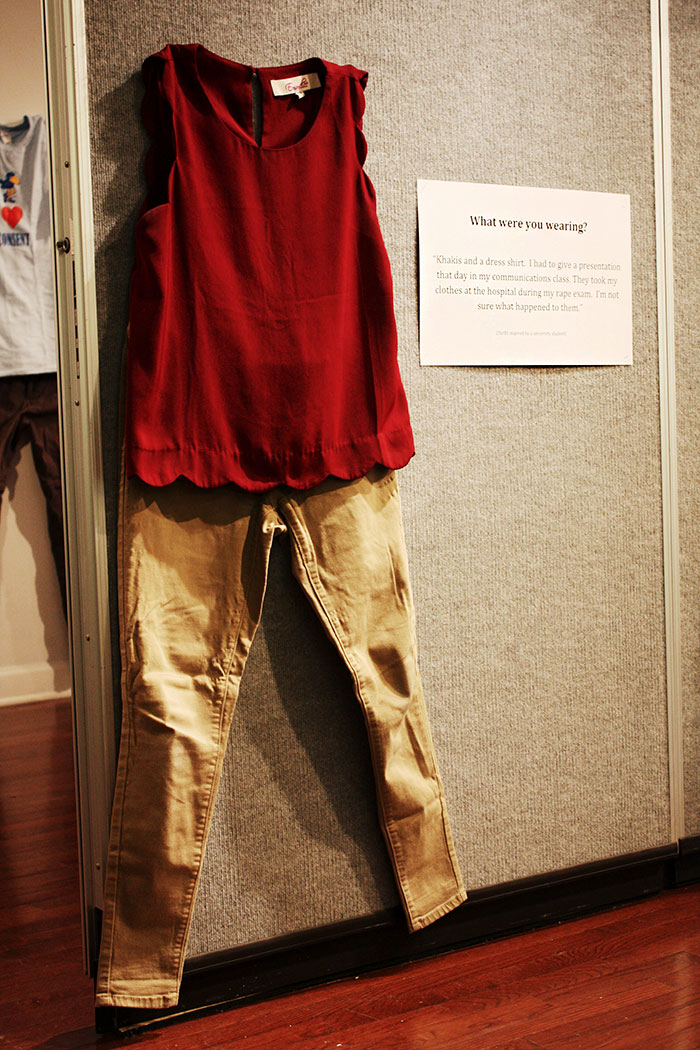
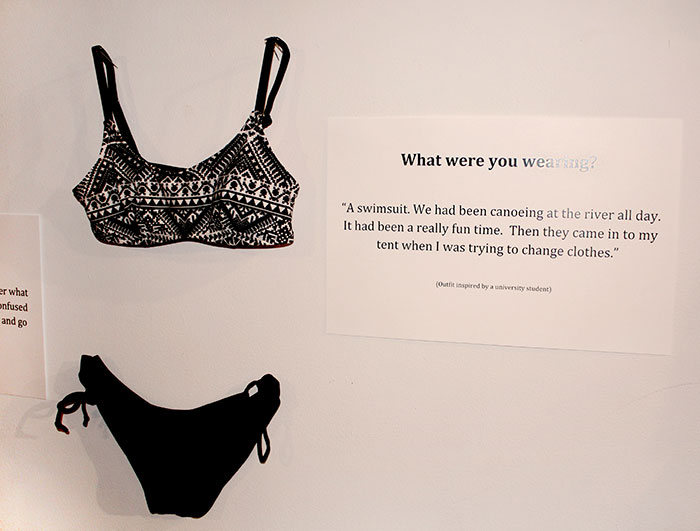

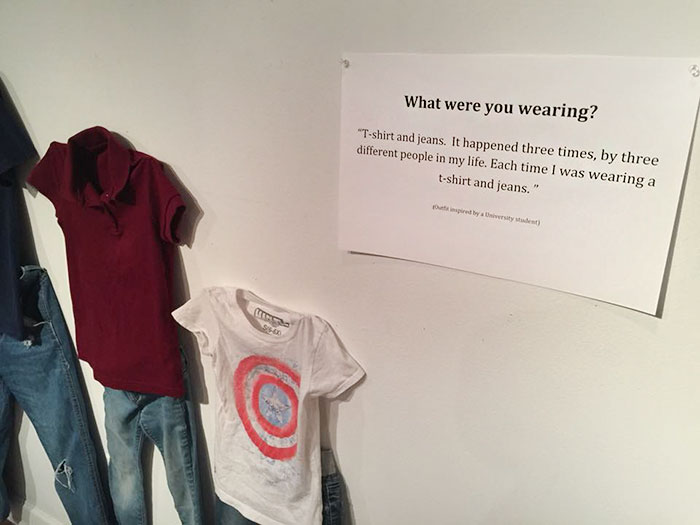
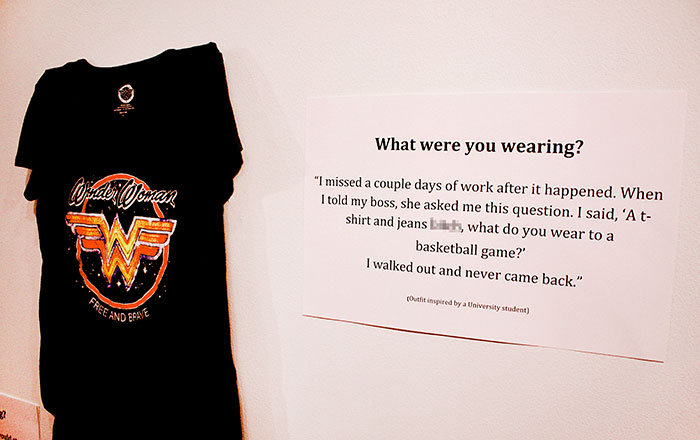
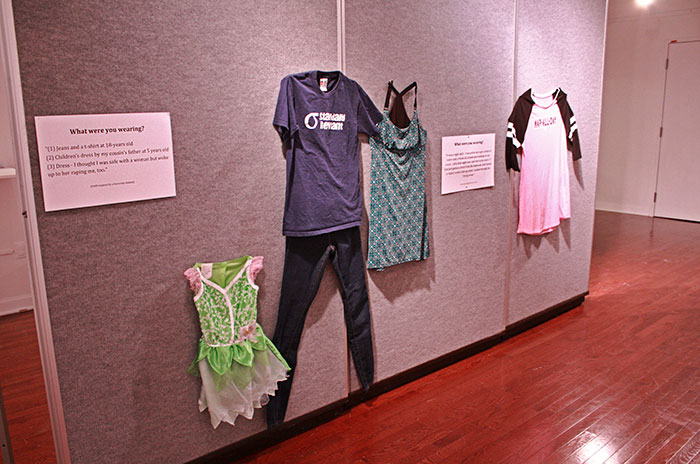
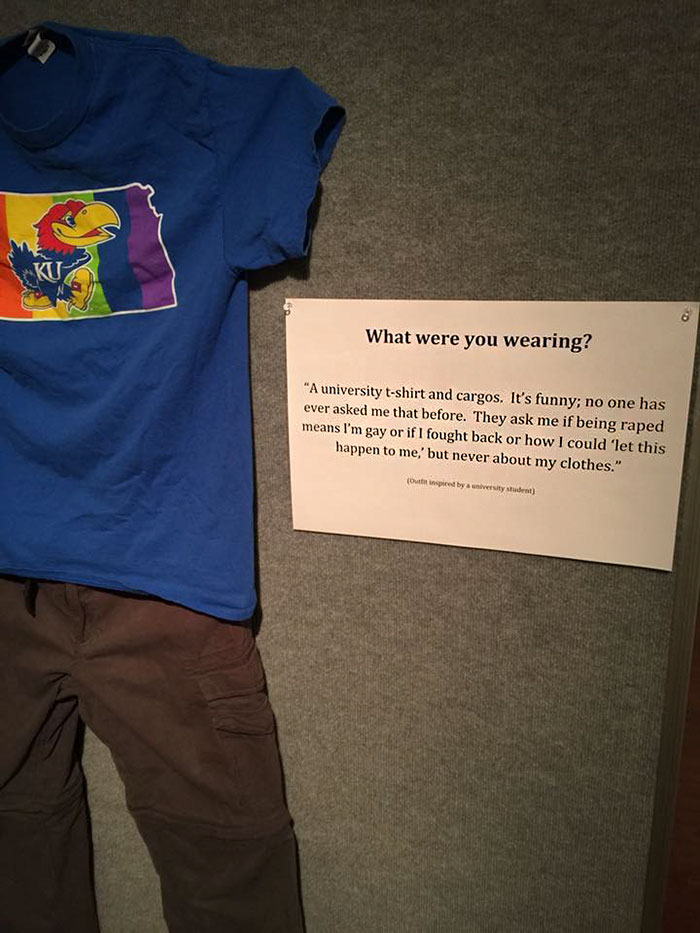
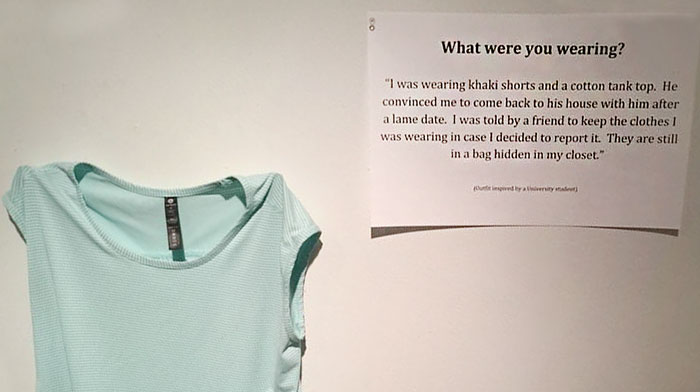
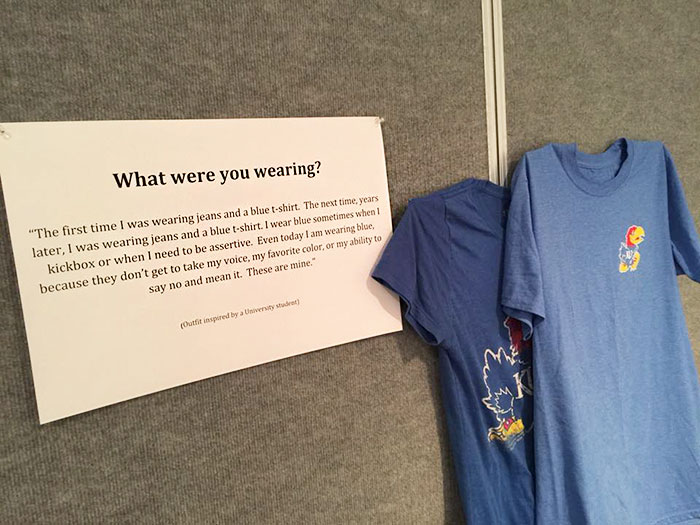

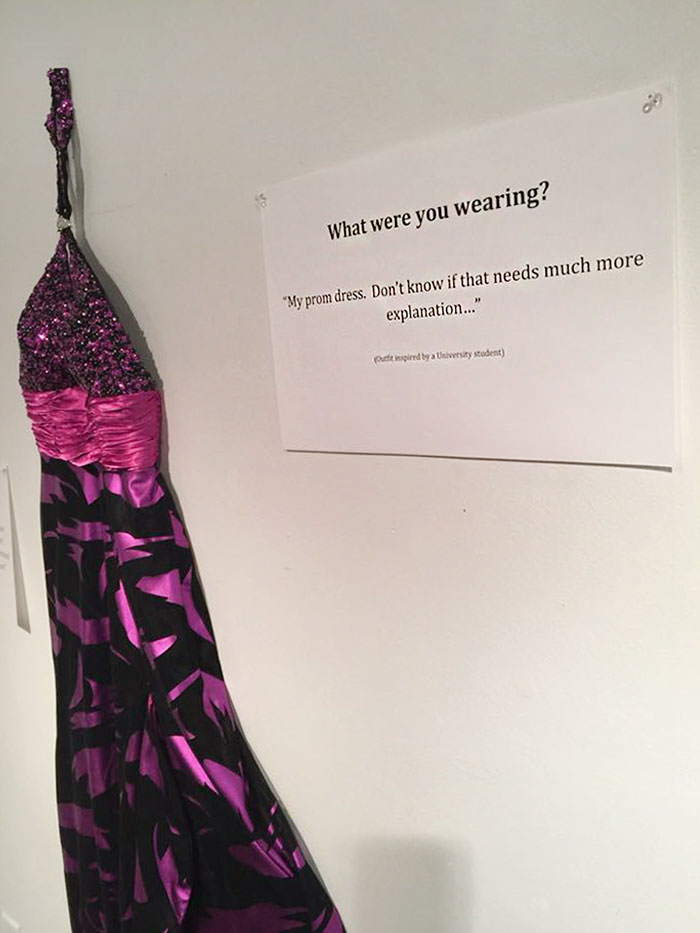
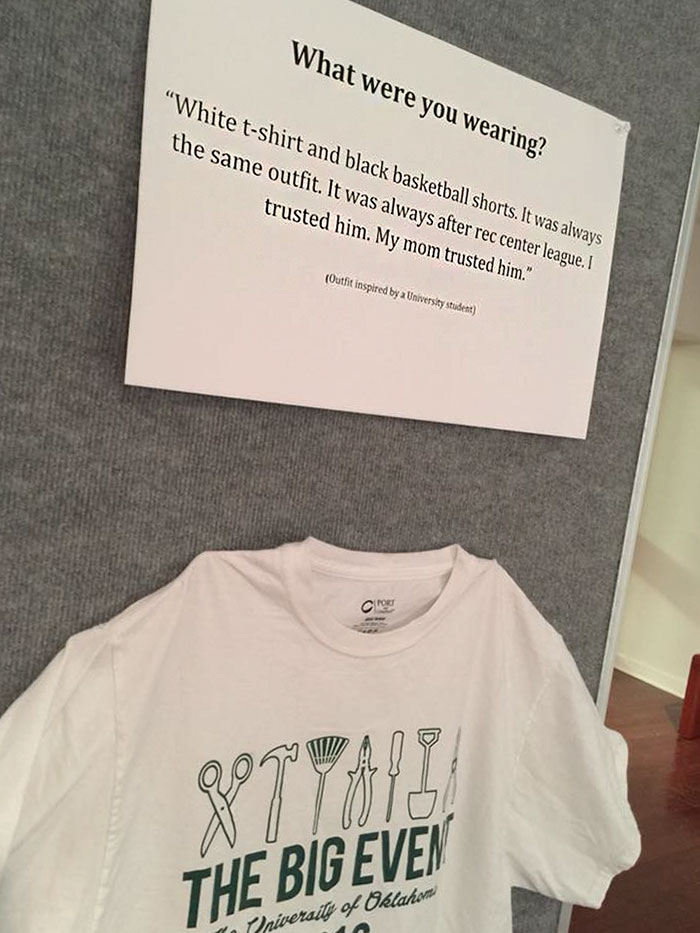
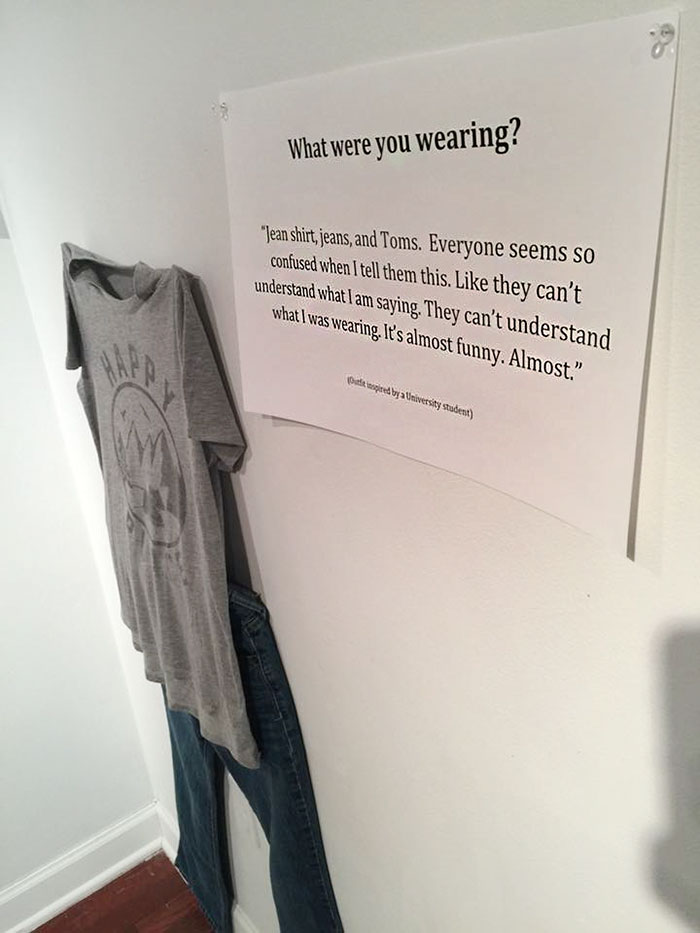
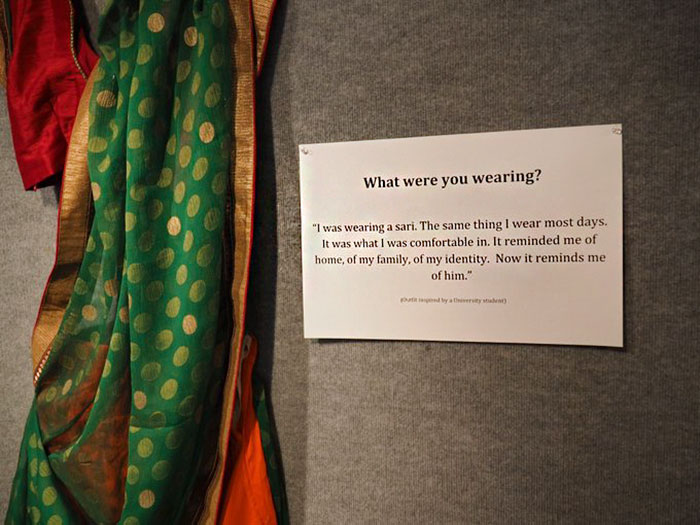
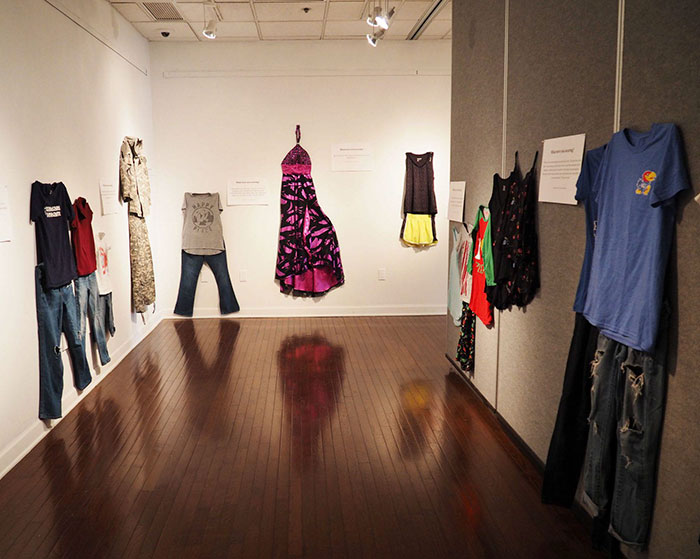



698
390